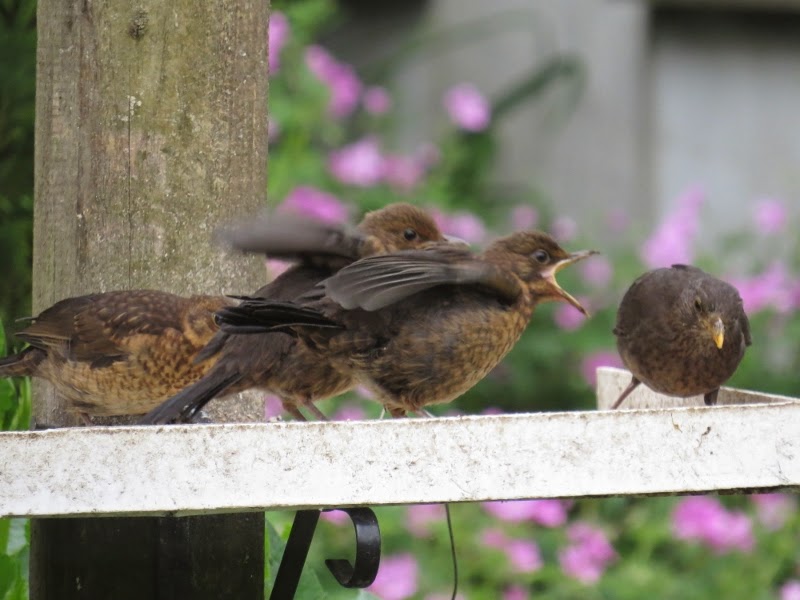Birds
With the shorter days
came less time for viewing nature.
November was rather grey, wet and mild.
However the
cooler shorter days are bringing the birds back to the garden. All
the usual species are back in at least low numbers, except the greenfinch
(Carduelis chloris), which has only been spotted once this
month. I
also don't see them on my local walks either.
I did see a bullfinch
(Pyrrhula pyrrhula) at Junk Woods on the morning of the first.
A mixed flock of
sparrows often dominate the bird table. They seem to be about 60%
house (Passer domesticus) and 40% tree (Passer montanus).
There is also the odd hedge sparrow or dunnock (Prunella
modularis) which is a more solitary individual.
I spotted at least five
goosanders (Mergus merganser) on the River Wharfe at
Tadcaster,
 |
| Goosander |
Three buzzards (Buteo buteo) at B woods, and a
murmuration of starlings (Sturnus vulgaris)at the flyover. I
spent some time filming the murmuration on the afternoon of the 29th.
They started about 15:50 and it was all over by 16:30. They dropped
out of the sky to roost in the shrubs around the pond. There must
have been about 500 of them. Quite a spectacular spectacle.
Whilst this was going
on there was a kestrel hunting in the field nearby.
 |
| Cock pheasant through the kitchen window |
Mammals
A tortoiseshell cat was
seen in the garden on the 1st but after a couple of other
visits has now disappeared again.
Although we used to
have rabbits in the garden every day in the summer they are now a
very rare occurrence, only one has been spotted in the last couple of
months.
Plants
I took some photographs
of plants that were still in flower on the last day of the month. I
suppose this is testament to the mild weather.
%2B(533x800).jpg) |
| Buttercup in perspective |
.jpg) |
| Nasturtium |
.jpg) |
| Geranium |
Fungi
The wet weather has
also been good for the fungi.
.jpg) |
| Part of the fairy ring? |
.jpg) |
| Winter sunlight captured through a fallen sycamore leaf |
.jpg)
.jpg)
.jpg)
.jpg)
.jpg)
%2BStarling.jpg)
.jpg)
.jpg)
.jpg)
.jpg)
%2BBlue%2Btit%2B(750x800).jpg)
.jpg)
.jpg)
.jpg)
.jpg)
.jpg)
%2BRobin%2B(800x600).jpg)
%2BWren%2B(800x600).jpg)
.jpg)
%2B(2).jpg)
%2BMouse%2B(800x600).jpg)
%2BRhagonycha%2Bfulva.jpg)
.jpg)
%2BBracket%2BFungi%2B(800x600).jpg)
















.jpg)
.jpg)
+(2).jpg)
+Swan+(533x800).jpg)
+(2).jpg)
+(2).jpg)
+(2).jpg)
+(2).jpg)